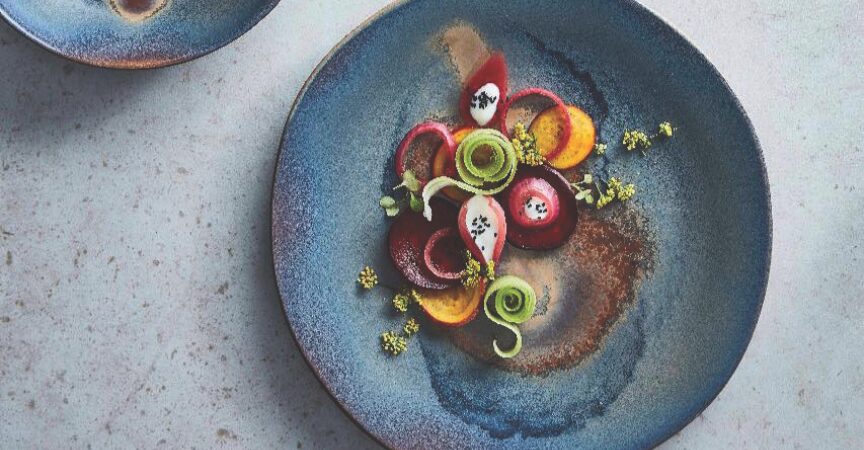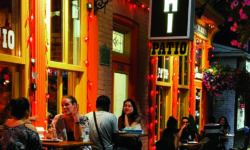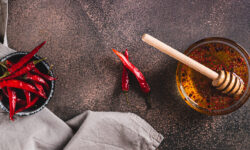The Silent Influencer: The Hidden Power of Tableware in Dining Design
By: Erwin Sohal, Director of Sales, Tableware Solutions
Tableware is more than just a vessel for food—it’s an integral part of the dining experience, shaping everything from aesthetics to perception. While chefs and restaurateurs obsess over ingredients, plating techniques and ambience, there’s an often-overlooked element that plays a crucial role in how a meal is received: the plate itself. To uncover the hidden influence of tableware in restaurant design, we spoke with Erwin Sohal, Director of Sales for Tableware Solutions, a Mississauga, Ontario based master importer and industry leader in sourcing exceptional ceramics, glassware and serving pieces.
Sohal doesn’t just sell plates—he shapes dining experiences during tours of their impressive showroom and warehouse filled with every conceivable type of plate, vessel and cutlery set sourced from around the globe. He began his career in glassware decoration, mastering the art of branding and high-impact visuals before expanding into the broader world of tableware. Now, with over 13 years in the industry, he operates at the intersection of design, durability, and storytelling. As a trusted advisor to chefs, hoteliers, and restaurateurs, he helps them choose tableware that enhances the guest experience—elevating presentation while meeting the rigorous demands of high-volume service.

Psychology & Performance on the Plate
When a dish arrives at the table, a guest’s first impression isn’t just about the food—it’s about how it’s framed. “A plate is a canvas for the chef,” says Sohal. “But beyond aesthetics, it impacts how a guest perceives flavour, portion size and even value.”

Studies in gastrophysics—the science behind the psychological effects of the combined inputs that influence the perception of a meal—have demonstrated that plate size, shape and colour can alter a diner’s sensory experience. Softer, organic shapes can make a dish feel more artisanal and intimate, while angular plates add a modern, high-energy feel. Dark plates, once a major trend, tend to make vibrant food colours pop, while classic white remains the preferred choice for emphasizing purity and contrast. “Your brain processes information about a dish before you take a bite,” Sohal explains. “A heavy plate, for example, makes the meal feel more substantial. A delicate, textured ceramic piece creates a sense of craft and care. These details are subtle, but they affect how guests interpret the experience.”
While aesthetic drives many decisions, restaurant operators must also consider function. “A dish needs to survive more than just service,” says Sohal. “It has to withstand high-volume kitchens, constant dishwashing, and the occasional drop.”
This is where material selection becomes critical. Fully vitrified ceramics, such as those produced by Continental China, offer a chip-resistant structure built for durability. Meanwhile, high-end European porcelain and handcrafted stoneware bring an elevated touch, often at a premium cost. “For casual concepts, durability is often the first concern,” says Sohal. “For fine dining, it’s about artistry. The challenge is finding pieces that balance both.”
New Technologies in Tableware
With increased demand for personalization, more restaurants are investing in custom tableware that reflects their brand ethos. Advances in photo-printing technology allow high-resolution designs, logos and intricate patterns to be embedded directly onto ceramic and porcelain surfaces, a technique Sohal is really excited about.

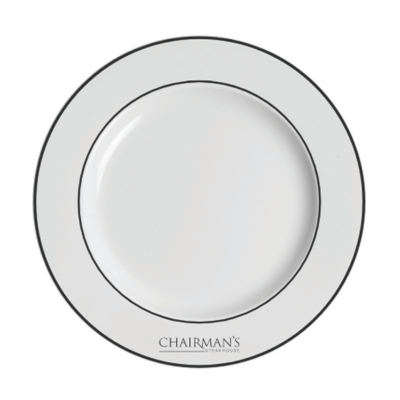
Unlike traditional decals or surface glazing, this process fuses the image into the material during firing, ensuring longevity and resistance to wear. “This technology has completely changed what’s possible for branding and personalization,” explains Sohal. “A restaurant can now have plates that reflect their exact aesthetic—whether that’s a subtle textured finish or a bold, statement-making design. It’s also a game-changer for large hospitality brands that want consistency across multiple locations.” The durability of photo-printed plates means they can withstand high-temperature dishwashing without fading, making them ideal for high-traffic establishments looking to merge artistry with function.
While traditional ceramics and glassware have long been the backbone of restaurant table settings, emerging materials are redefining durability without compromising presentation. Next-generation vitrified ceramics are leading this evolution, offering plates and bowls that are significantly lighter yet more impact-resistant than conventional porcelain. By refining the firing process and incorporating advanced clay blends, manufacturers are producing tableware that maintains the delicate, artisanal appeal of handcrafted pieces while standing up to the rigors of commercial kitchens. These innovations reduce breakage, minimize replacement costs, and improve handling for servers who need to carry multiple dishes at once. “Chefs and operators don’t want to be constantly replacing plates,” says Sohal. “Durability is a huge concern, especially in high-volume restaurants where dishes are moving at a fast pace. The last thing you want is to invest in beautiful tableware that chips or cracks too easily.
The latest ceramics give you that high-end look with real resilience.”
On the glassware side, shock-absorbing glass composites are making waves in high-volume bars and restaurants. These materials incorporate flexible yet ultra-strong elements, allowing glasses to bend slightly upon impact instead of shattering. Some brands are even utilizing borosilicate glass, the same material found in lab equipment, which offers extreme thermal resistance and break protection. For establishments where glassware replacement costs add up quickly—especially in fast-paced, high-turnover environments—this shift toward impact-resistant, ultra-lightweight materials is proving to be a game-changer.
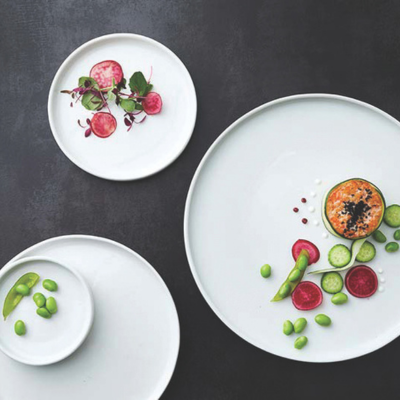
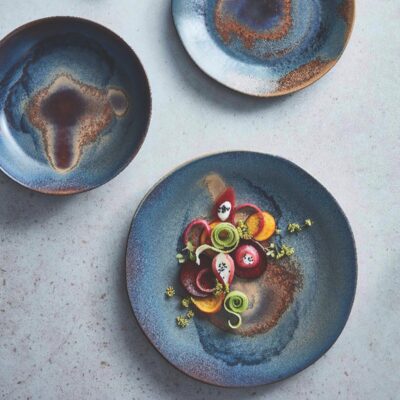
The Evolution of Plating Trends
Tableware trends, like food trends, evolve alongside cultural shifts. “Minimalism dominated for years,” Sohal notes, referencing the once-ubiquitous preference for clean, white plates. “Now, we’re seeing a return to warmth—textured stoneware, earthy tones, and asymmetrical shapes that mimic the feel of handcrafted pottery.”
This shift aligns with the rise of experiential dining. Guests today crave sophistication and storytelling, and tableware plays a silent but essential role in that narrative. “If you’re serving Turkish cuisine, your presentation should reflect that heritage,” says Sohal. “The plate can reinforce the story just as much as the flavours do.”
Sohal notes that chefs are increasingly using atypical vessels to surprise and delight guests, transforming the dining experience into a moment of discovery. One operator opted for a charcuterie board as a base for an elaborate entrée, layering plates and ramekins to create a visually striking tablescape. “It was unexpected,” Sohal recalls, “but that element of surprise became part of their brand identity. The dish took off on social media, and now it’s what they’re known for. We’ve even had an operator use traditional Indian copper bowls for poutine. It’s all about contrast. When you present something in a way diners haven’t seen before, it elevates even the simplest ingredients.”
Sohal has also seen an operator repurpose an oversized ceramic coffee mug as a serving dish for a decadent dessert, creating a nostalgic, playful moment for guests that got everyone talking and notes that even fine dining establishments are thinking beyond the white plate. “We’ve worked with Michelin-starred chefs who want bespoke serving pieces—things you wouldn’t even think of as tableware,” Sohal says. “One restaurant used polished river stones to serve amuse-bouches, another used a slab of reclaimed wood as a serving board for dry-aged beef.”
“Chefs are artists,” Sohal says, “and we give them the tools to present their best work.”
Follow IG: @tablewaresolutions
TOP TABLEWARE TRENDS FOR 2025
- Handcrafted Aesthetics – “Textures, asymmetrical edges, and handmade looks are becoming the standard as restaurants look to create more warmth and authenticity on the table.”
- Earthy, Muted Tones – “Terracotta, sage, and deep charcoals are replacing the stark minimalism of the past decade, giving plates a more natural, organic feel.”
- Customization – “Restaurants are investing in personalized plates with their branding, wallpaper patterns, or unique designs fused into the ceramic for a seamless look.”
- Unexpected Vessels – “Chefs are getting creative—coffee mugs for desserts, wooden boards layered with smaller dishes, even metal tins for seafood presentations.”
- Social Media-Driven Plating – “Presentation is now as important as taste. Plating must be visually engaging because guests are experiencing their meals through their camera lens before taking their first bite.”
- Sustainability – “More operators are looking for long-lasting, high-quality ceramics and alternative materials like bamboo-fibre plates to reduce their environmental footprint.”

Visit Tableware Solutions at Booth #2219 or stop by the RC Pop Up Experience to check
out their plating in action and on display!



